Apple Enters the Dive Computer Market With the New Ultra Watch

If you are a scuba diver and also an Apple Watch fan, there is some good news for you - the Cupertino company has teamed up with Oceanic to launch a new Apple Watch Ultra that, when paired with the Oceanic+ app, can be used as a full-featured dive computer.
Dive Features
To support the scuba diving functionality, Apple has added depth and water temperature sensors to their Ultra watch model. Additionally, the device is certified to EN13319, which is an internationally recognized standard for dive accessories, including depth gauges.
With its 100m/328ft water resistance, and a depth gauge capable of measuring down to 40m/131ft, the Apple Watch Ultra is designed for recreational scuba and freediving only (and the manufacturer states as much).
That being said, with the Oceanic+ app on board, the device surely won’t lack any of the standard dive computer features. The users will get at-a-glance info about current depth, water temperature, time underwater, and max depth reached.
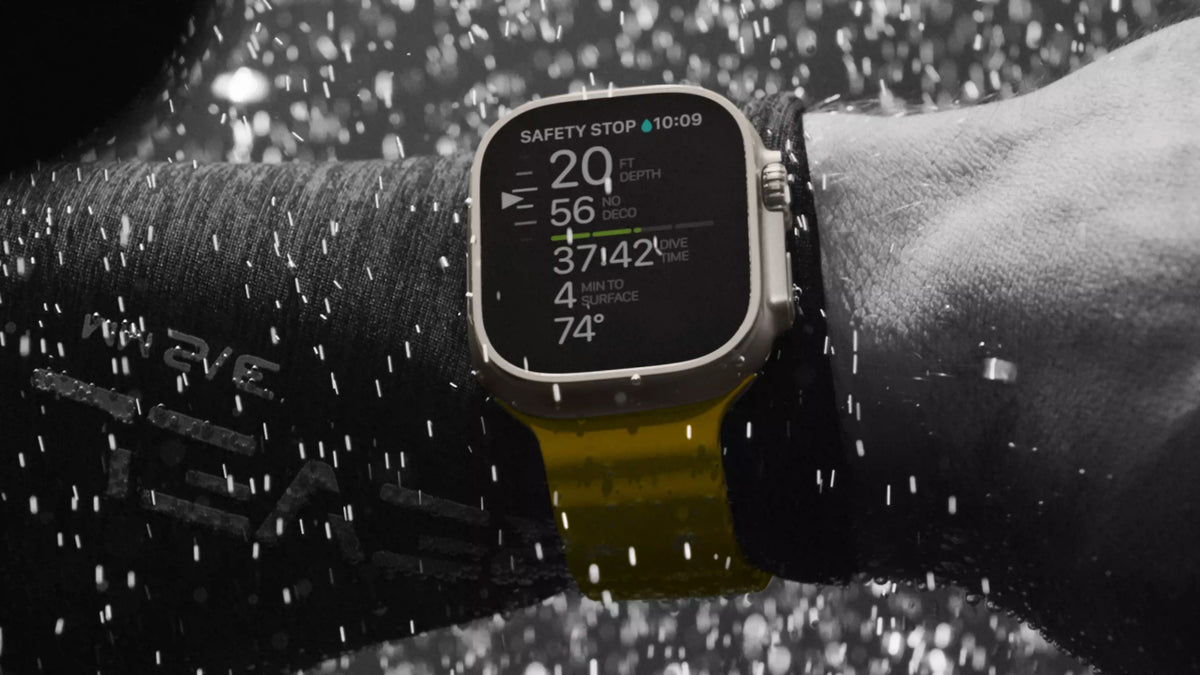
The app, running the Bühlmann decompression algorithm, will also include:
- dive planning,
- integrated compass,
- easy-to-read dive metrics,
- visual and haptic alerts,
- no-decompression limit,
- ascent rate,
- safety stop guidance,
- personalized user profile,
- reports on current and local dive conditions,
- dive logbook that can be shared with family and friends and synced to iPhone.
You can get the data from your dive immediately after surfacing - including your GPS entry and exit points - and profiles are organized in an integrated logbook.
According to Apple, “The Oceanic+ app on iPhone goes beyond calculating just depth and time by integrating local conditions like tides, water temperatures, and even community‑fed info like visibility and currents.”
As for the menu navigation, you can access additional screens by turning the Digital Crown. Furthermore, color coding is used to make complex information easy to understand.
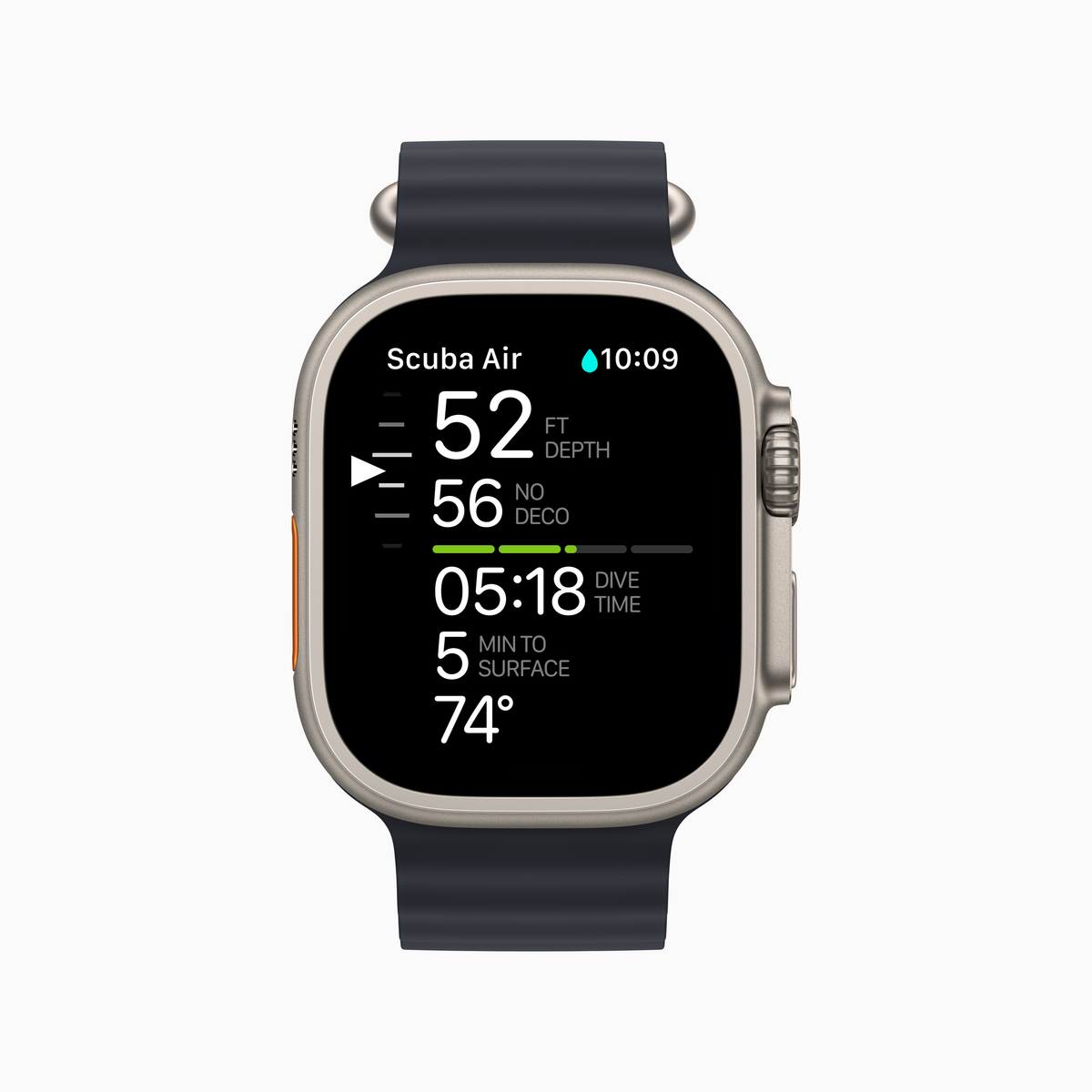
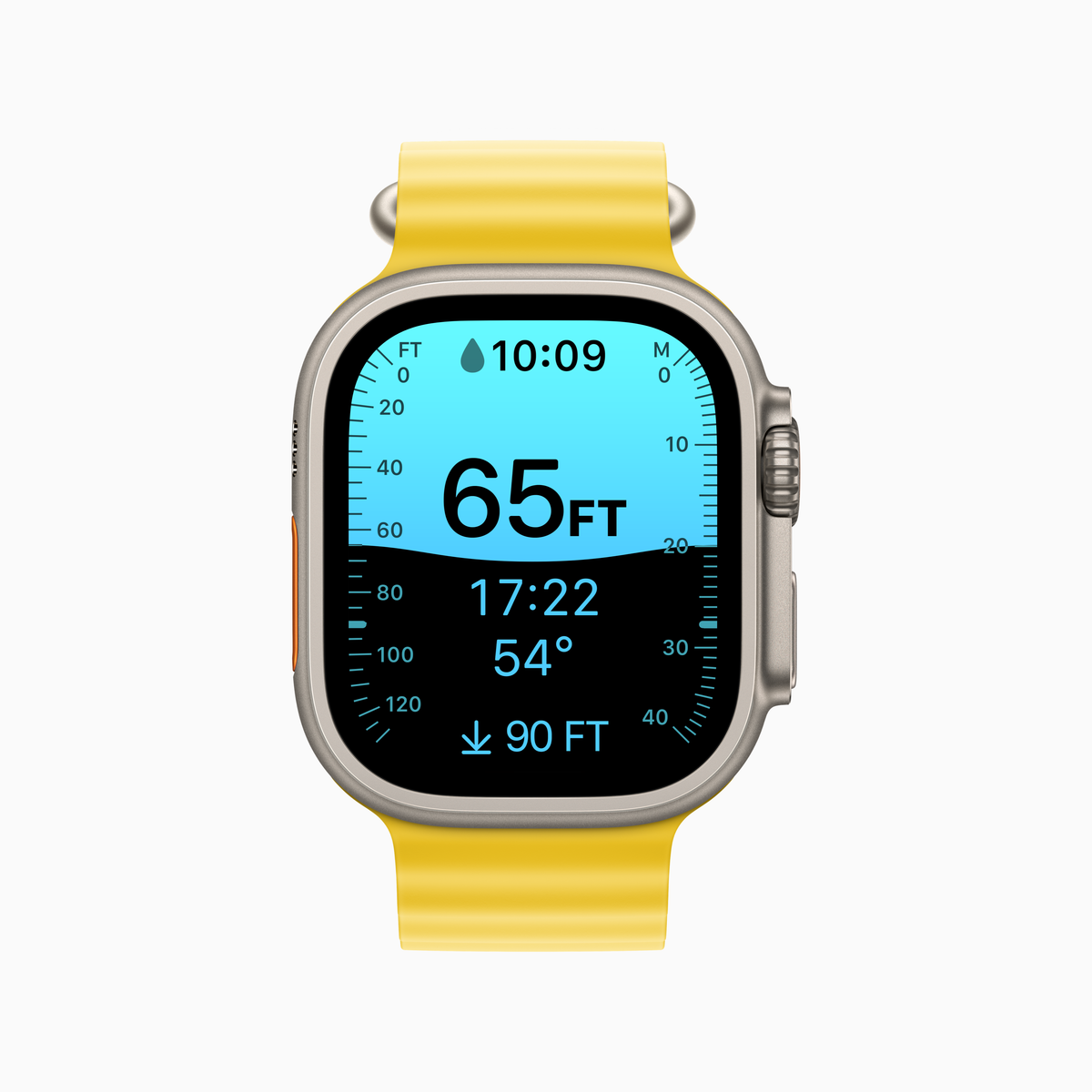

Build and Design
Needless to say, the Ultra isn't just a dive computer - it's meant as an all-around rugged outdoor watch with all the features to accommodate those with active lifestyles. Some examples are resistance to extreme temperatures, dual-frequency GPS, and the Action Button (on the case's lefthand side) that can be customized for different activities.
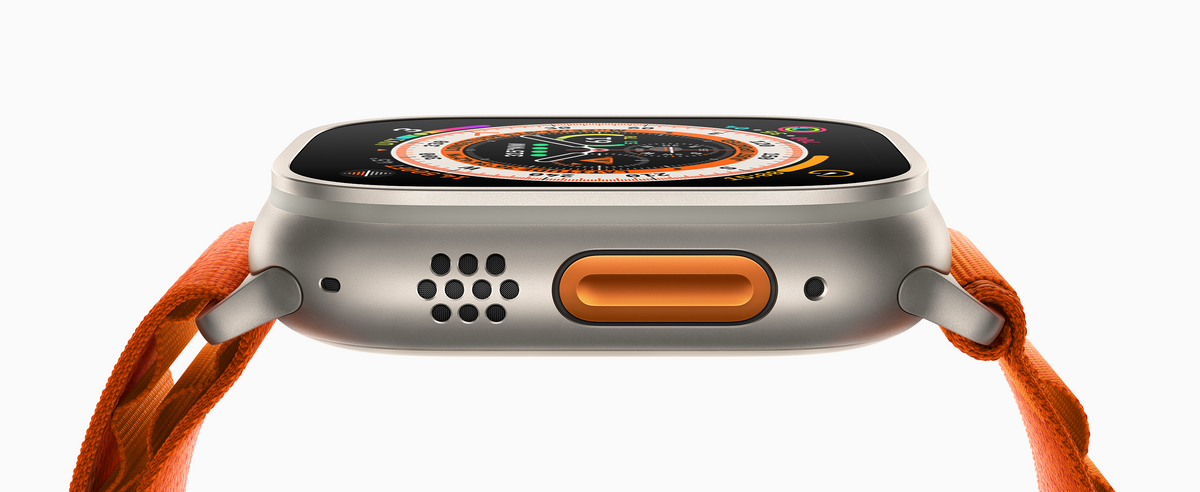
The watch design reflects that it’s geared towards the outdoorsy type. The Ultra has the largest and most rugged casing of any Apple Watch. The titanium enclosure measures 49mm making it 4mm bigger than any watch the company has made. The screen is completely flat, and the housing is raised to protect the sapphire edges from bumps.
The watch promises 36 hours of battery life on a single charge and up to 60 hours with battery optimizations that are coming via a software update later this fall.
Finally, Apple is introducing three new bands to accommodate the needs of different adventures. The Ocean Band for divers, molded from fluoroelastomer rubber, is lightweight and flexible. It features a titanium buckle and a spring‑loaded titanium adjustable loop that are supposed to provide a secure fit, even during high‑speed water sports.
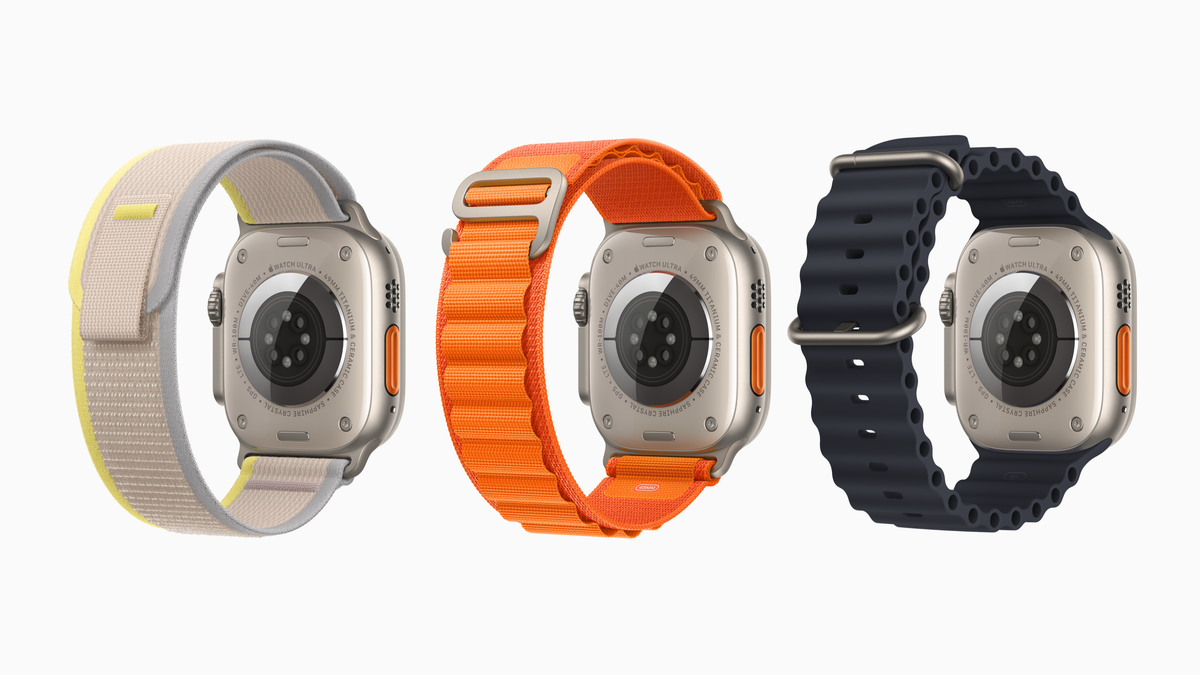
Price and Availability
The Apple Watch Ultra itself will be available from September 23rd and retail for $799.
The Oceanic+ app is also expected to launch later this fall. There will be a free version of the app, but that will not include the decompression info as well as forecasts and dive conditions reports. For the full version of the app, you’ll need a paid subscription: $4.99 a day, $9.99 a month, or $79.99 annually.
Additionally, Oceanic has several exciting accessories in development for use with the Oceanic+ app, one of which is the Oceanic+ Smart Housing. Used with an iPhone, it will allow users to take color-corrected pictures while seeing their dive computer information overlayed on the iPhone. The Smart Housing will be available in the summer of 2023.
What Will This Mean for the Dive Computer Industry?
It was Garmin’s debut on the dive computer market with their hugely successful line of multisport watches that signified a shift in the industry and, for the first time really, showed it was possible to combine a fully functional dive computer and a daily wearable smartwatch.
Wondering how Apple Watch Ultra Compares to Garmin Dive Computers?
Read Garmin Watch ReviewsNow, with another multisport device by Apple, a company that has a history of putting legacy businesses out of business, many have started wondering - is this truly the end of the dive computer industry as we know it?
As neither the Apple Watch Ultra nor the Oceanic+ app has been tested by the diving community yet, there are currently more questions than answers both regarding the industry as a whole and the success of this particular device.
Will the wireless air integration be added sometime down the line? How long will the battery last in “dive mode”? How will the computer behave if you exceed the 40m/131ft depth limit? How good the readability and UX actually are?
Until those questions are answered, we are left to wait in anticipation to see if this is a revolution or just another one of the high tech toys.

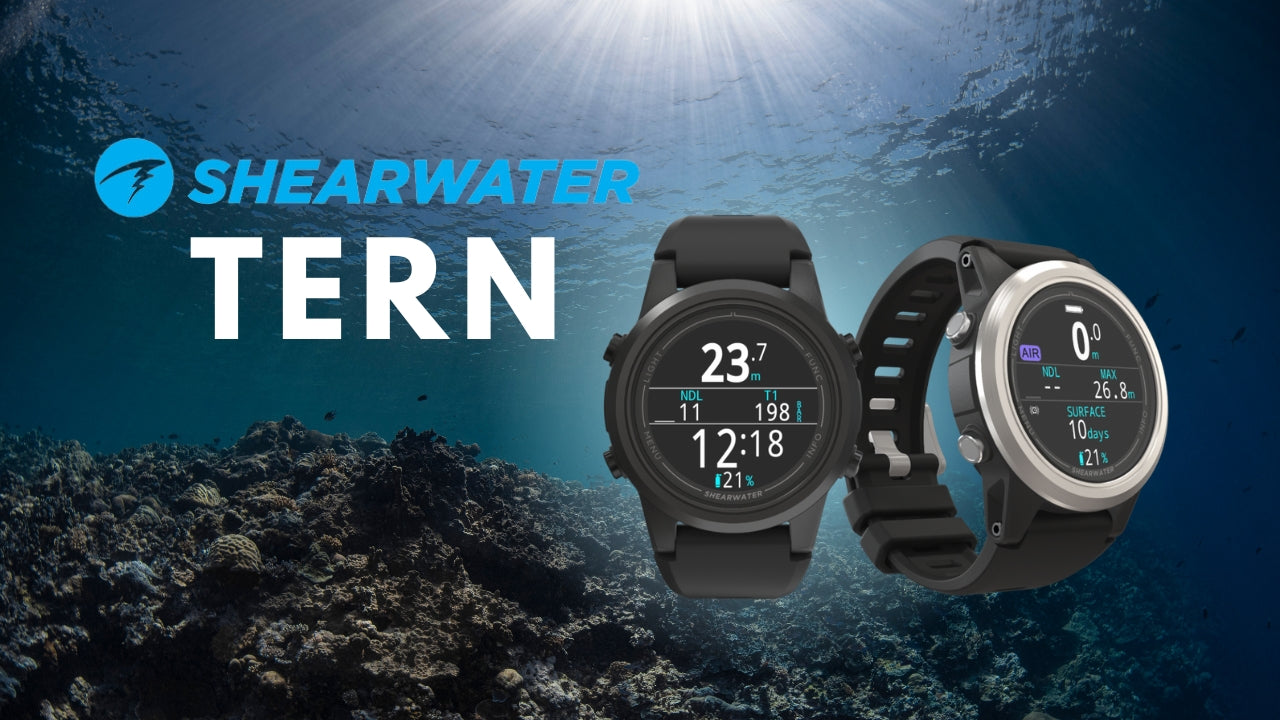

![9 Best Dive Computers in 2024 [Reviewed & Updated] - DIPNDIVE](http://dipndive.com/cdn/shop/articles/best_computers2.jpg?v=1658752532)

Wow, thanks for such a detailed review, Gary! I’m sure many of our readers will benefit from your insights.
I’m an Advanced diver with over 1,000 dives in my log. I’ve been using the Apple Watch Ultra here in Cozumel for the past two weeks doing 2-4 dives a day with 20 dives completed. I also have a Suunto Eon Core which I’ve used for nearly 1,000 dives. I’ve been comparing them, with one on each wrist. I’m extremely impressed with the Ultra thus far.
First off, as for power consumption. On a 2 tank dive I had more than 72% power remaining on the watch. And, with a 4 tank dive I had 56% (I know… proportional). So, starting at 6am off the charger and finishing at 6pm I still had plenty of charge for the evening, after a two or four tank day, before putting it back on the charger.
My Suunto obviously has more functionality including tri-mix and a tank pressure option by buying the tank transmitter. The tank transmitter is a $400+ cost and I’ve read that barely 20% of the dive computer users have spent the extra hundreds of dollars for that functionality. The Ultra is not intended for that segment of the market. It’s for recreational divers who don’t exceed the 134 foot limit and the vast majority of them just use a mechanical console showing their pressure. Maybe Apple will add that as a feature or in next iteration of the watch.
Having said that, the Apple Ultra is much easier to use, is brighter and does everything needed by a recreational diver. The Eon Core has a very intuitive user interface but Apple has it beat on ease of use and brightness. I use it in both the Air and Nitrox settings. Switching to the Nitrox setting is easy on the Eon Core and even easier on the Ultra and much easier than many other dive computer I’ve used.
There have been negative comments about the subscription service partnered with Oceanic. I think there is a misunderstanding about the Oceanic subscription. Some people seem to think that you need it to buy it in order to use the watch as a dive computer. That is not correct, You don’t. The subscription application gives you a pre-dive planner and log to off-load your dive computer information to your iPhone, iPad or computer.
That’s a nice to have, but not something I absolutely have to have and definitely not a deal breaker as far as I’m concerned. But, while here in Cozumel, out of curiosity, I signed up for one month of subscription, for $9.99, and promptly cancelled it so it will expire just after I leave. The data will stay in the log and be viewable. When I go on another dive trip, I will possibly pay $10 for 2-3 weeks of diving (probably 20-30 dives) and then cancel again. To me, that is well worth the nominal subscription price. The question I’d have someone ask themselves is, how many dive trips do I take each year? If it’s like many divers who maybe do two or three trips a year, then paying $9.99 per trip for as many dives as they do during that trip is pretty inexpensive for the planner/log. If you live near a dive area and dive every weekend or more, then $79 for a year doesn’t seem like a big expense to me. Certainly, it’s cheaper than renting a dive computer. And, it’s all in one device.
I bought the Ultra because I was already interested in buying a new Apple Watch and for a few hundred extra dollars I got a dive computer as well. Keep in mind, the Ultra uses a titanium case, instead of aluminum or stainless steel, has a sapphire crystal instead of Gorilla Glass as in the regular Apple watches, and has cellular built in (which I use independently from my iPhone). So, the extra cost is partly offset by the upgraded materials and cellular.
If you’re in the market for a new Apple Watch and you also need a dive computer, you can have it in one device. I highly recommend getting the Ultra so that you only have one device to wear and keep track of.
I trust this helps those considering the Apple Ultra watch.
Enjoy
Gary